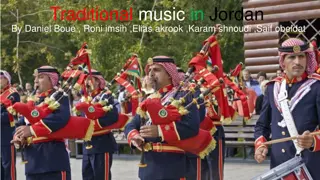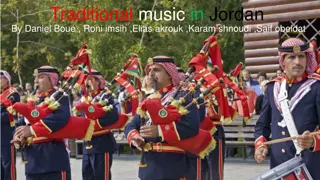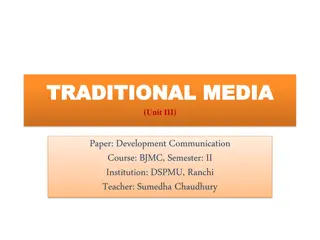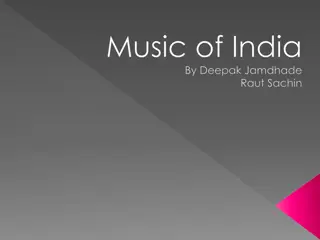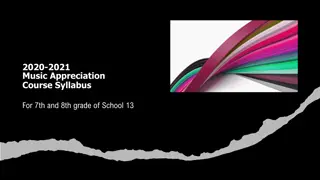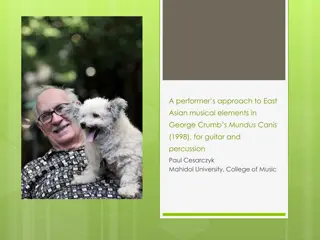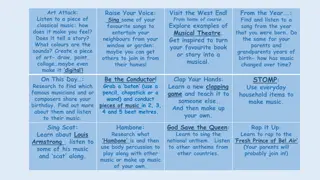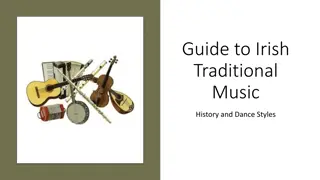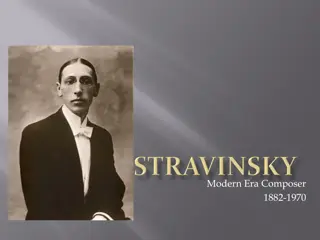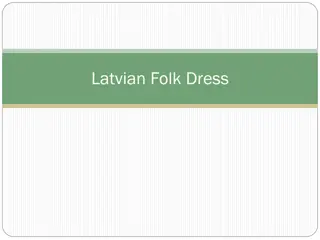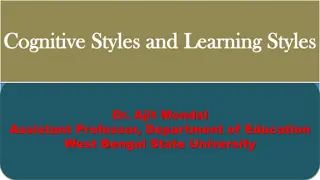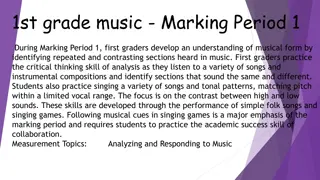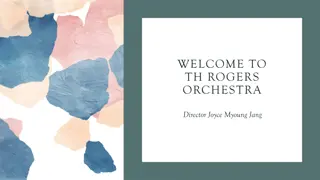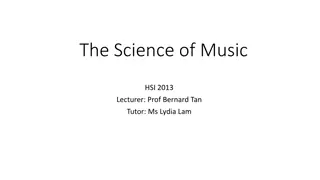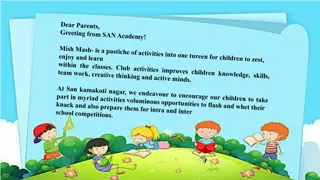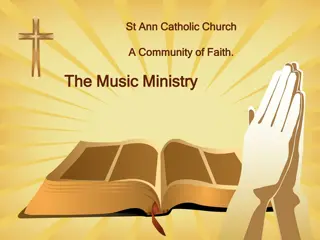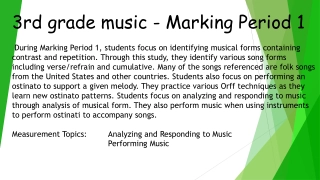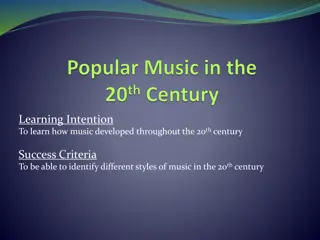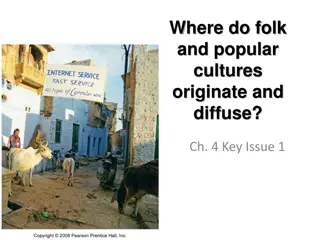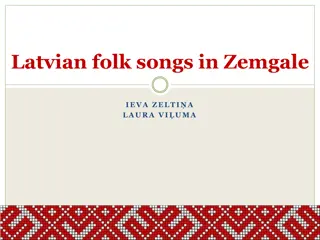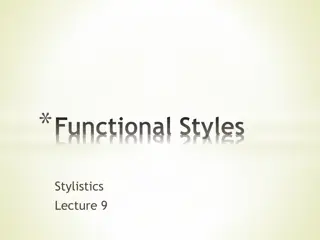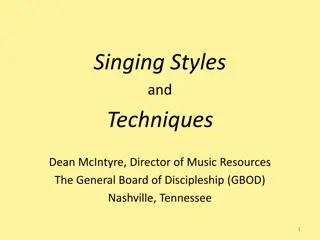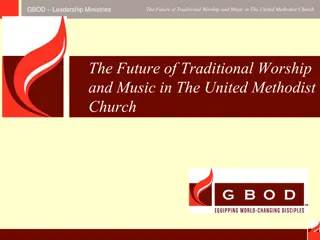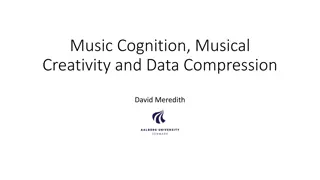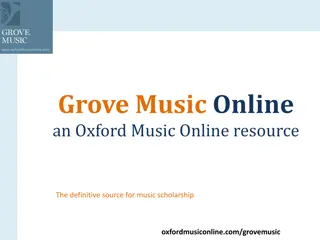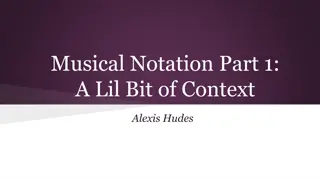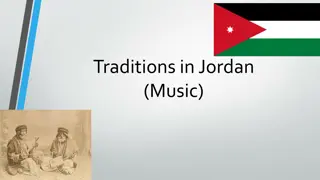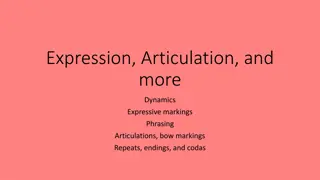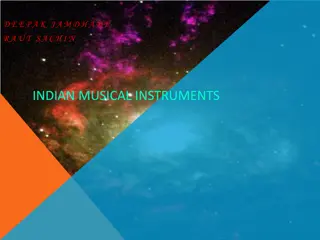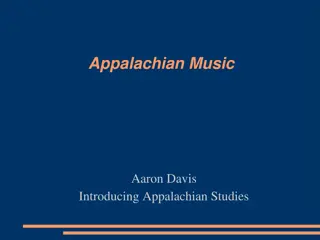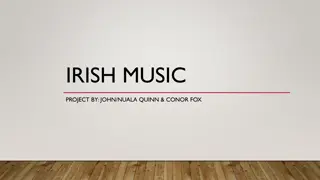Exploring Musical Styles: Traditional, Folk, and Art Music
Traditional music, characterized by oral transmission and cultural basis, represents the roots of folk music encompassing diverse genres and instruments. Folk music, celebrating national identities and historical events, showcases a plethora of unique instruments and cultural expressions. Art music, denoting complex structures and serious themes, represents a refined tradition in the realm of musical expression.
Download Presentation

Please find below an Image/Link to download the presentation.
The content on the website is provided AS IS for your information and personal use only. It may not be sold, licensed, or shared on other websites without obtaining consent from the author. Download presentation by click this link. If you encounter any issues during the download, it is possible that the publisher has removed the file from their server.
E N D
Presentation Transcript
Assignment: Using the worksheet provided, fill in the blanks using the information presented in the following slides.
Traditional Music Traditional music is a modern name for what has been called "folk music", excluding the expansion of the term folk music to include much non- traditional material. The defining characteristics of traditional music are: Oral transmission: The music is handed down and learned through singing, listening, and sometimes dancing. It is passed down without written sheet music. Cultural basis: The music comes from and is part of the traditions of a particular region or culture.
Folk Music Folk music includes both traditional music and the genre that evolved from it during the 20th century folk revival. The term originated in the 19th century but is often applied to older music. Some types of folk music are also called world music. Traditional folk music has been defined in several ways: as music transmitted by mouth, as music of the lower classes, and as music with unknown composers. It is not music made for money. Folk music is usually music that has been transmitted and evolved by a process of oral transmission or performed by custom over a long period of time; these songs would be passed down from generation to generation, which is why there are often many variations.
Folk Music Folk music generally identifies with a particular nation and provides a common ground for immigrants. Examples include music from Greece, Latin America, France, Africa, Israel, Asia, or the American Indians. Folk Music often commemorates a personal or historical event such as religious festivals, funerals, weddings, etc. These songs may also be accompanied by traditional dances or costumes.
Folk Instruments Tin whistle: Ireland Folk music often uses non-standard instruments we generally call folk instruments . Some are: banjo, fiddle, harmonica, pan flute, dulcimer, tin whistle, oud, balalaika, didgeridoo, sitar, and djembe. Pan Flute: Greece and S. America Didgeridoo: Australia Djembe: West Africa (Mali) Oud: Egypt & Turkey Sitar: India Balalaika: Russia Dulcimer: America
Examples of Folk Music Celtic: D laman Bluegrass: Alone and Lost American: Shenandoah Spanish: Ceilito Lindo Hebrew: Tumbalalaika Russian: Katyusha Saudi Arabian: Old Saudi Song
Art Music Art music (also known as serious music) is an general term used to refer to musical traditions implying a more complicated structure and a written musical tradition. Art music is usually more complex and requires skilled musicians to perform it, unlike traditional music and popular music, which are easily. accessible to everyone. Samples: Vocal: Dona Nobis Pacem Instruments (recorder): Teremu Tu Overture to the School for Scandal
Popular Music Popular music belongs to any of a number of musical genres "having wide appeal and is typically distributed to large audiences through the music industry. It stands in contrast to both art music and traditional music, which are typically passed on academically or orally to smaller, local audiences. Popular music is different than pop music , and refers to music of all ages that appeals to popular tastes of society.
Popular Music Through the Ages 1920s: Toot toot toostie Al Jolson 1930s: In the Mood Glenn Miller 1940s: Boogie Woogie Bugle Boy The Andrews Sisters 1950s: Mr. Sandman The Chordettes 1960s: Twist and Shout The Beatles 1970s: Stayin Alive The BeeGees 1980s: Beat it Michael Jackson 1990s: All-Star Smash Mouth 2000s: Hey Ya Outkast 2010s: Rolling in the Deep Adele


